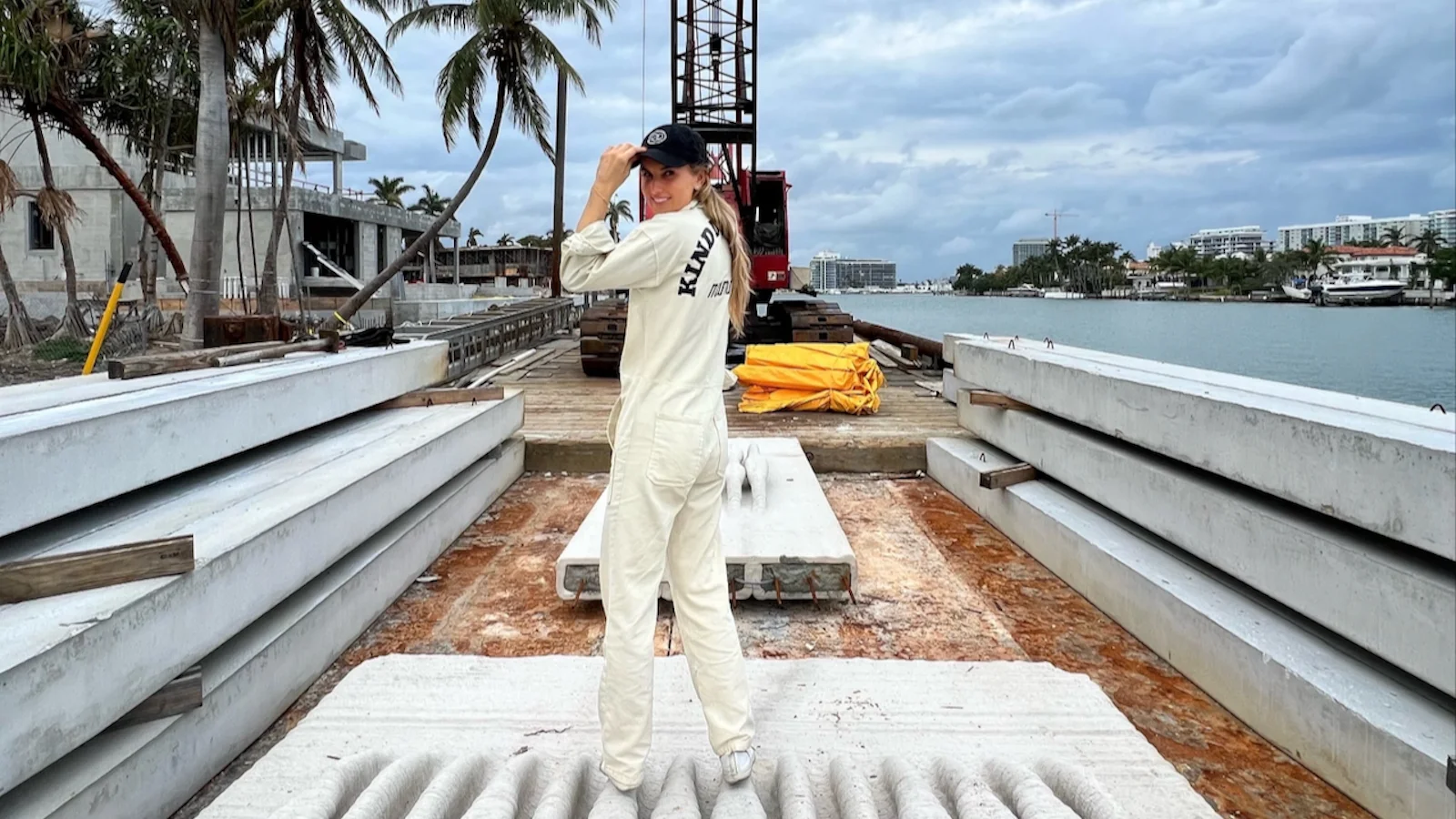When Anya Freeman was a child, her family came to the United States for her father’s job opportunity in pursuit of the American Dream. As a half-Ukrainian, half-Russian immigrant turned U.S. citizen, Freeman never envisioned that her own journey would lead to inventing a solution for protecting thousands of America’s coastal communities threatened by rising sea-levels.
“We don't have to convince anyone that the sea levels are rising or that there's an increase in storm surges, and every coastal community is really focused on finding solutions,” said Anya Freeman, Founder and CEO of Kind Designs.
Freeman is a career lawyer but after starting her law firm in Miami she faced the continual nuisance of flooding near her home. After seven years of constant frustration, she decided it was time to find a solution.
“Every time it rained, we literally had to race home as fast as we could to move our cars out of the driveway and into the next street, because if we didn't, they would literally float down the street. That's how bad it was,” said Freeman.
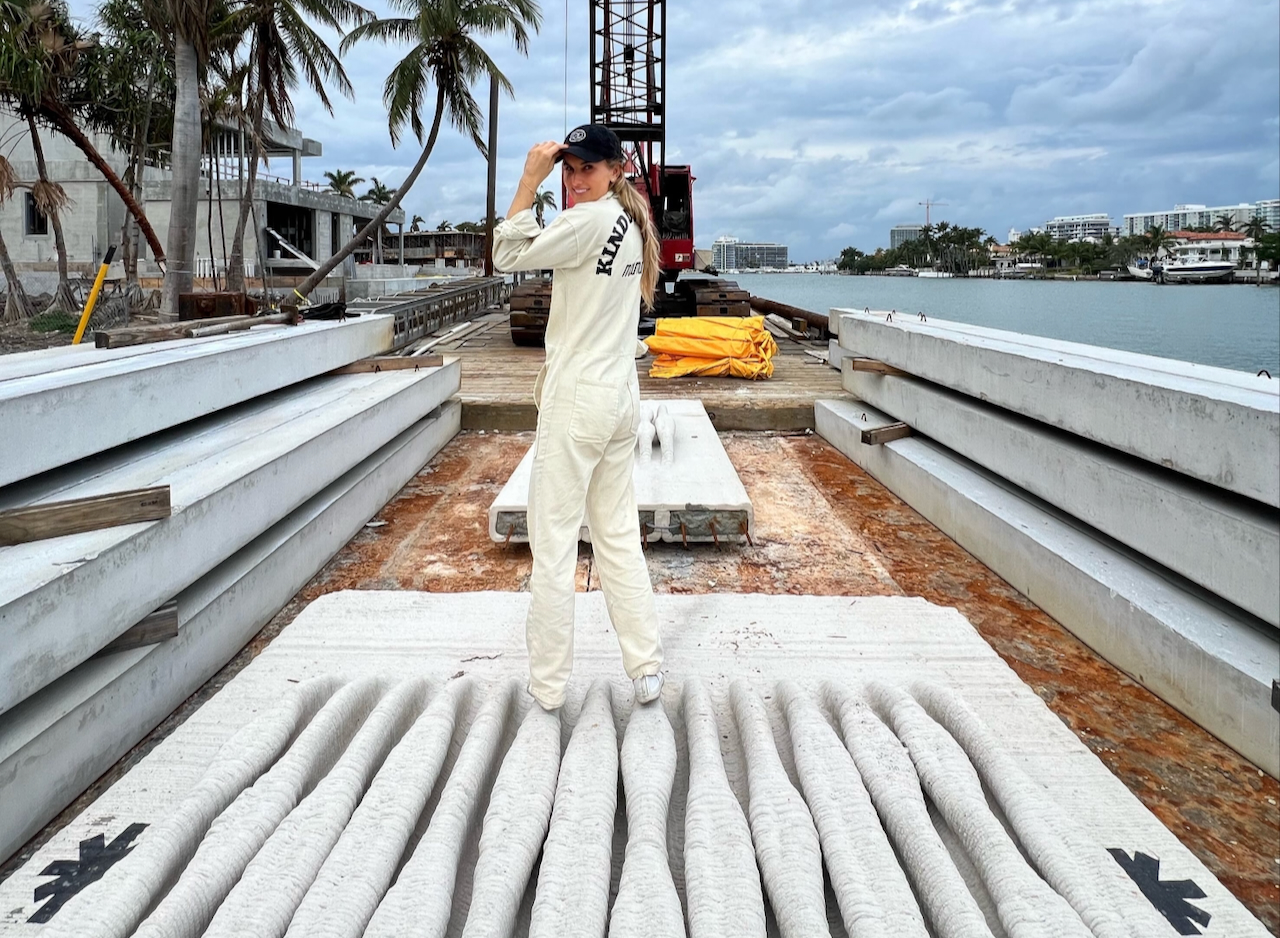
Kind Designs CEO Anya Freeman standing on the company’s first 3D living seawall installed in Miami, Florida. (Photo: Kind Designs)
Freeman set out on a relentless pursuit to find a solution that didn’t seem to exist. She discovered this is partially because there is too much money being made by keeping things as they are.
“The narrative is always doom and gloom. It's always, you have to be crazy to invest in coastal property and in coastal cities. We're all going to be underwater. People are always selling books of this, and it's the easiest thing to sell with fear mongering,” said Freeman. “Seeing that there was not a lot of attention on solutions, and specifically technology that can be used to bring solutions to these cities, I left behind being a lawyer and decided to start Kind Designs, which would number one, find a solution for my home.”
As Freeman investigated solving her own problem, she stumbled on a much bigger one—the broader impacts on coastal communities from climate change and rising sea levels.
She uncovered crisis scenarios involving climate-displaced populations like the residents of Isle de Jean Charles in Louisiana. This is where 400 residents were forced from their barrier island homes because rising sea levels have swallowed 98 percent of the island.
Freeman also investigated the U.S. Army Corps of Engineers (USACE) plan to construct 50,000 miles of seawalls in 22 states over the next 20 years. The massive undertaking is part of a $400 billion flood control project to protect communities against rising sea levels and coastal erosion due to climate change.
These discoveries underscored an issue extending far beyond the nuisance flooding on Freeman’s Miami street, but one dangerously impacting millions of Americans. The crisis-level need for more solutions seemed to already exist on the radars of environmental and infrastructure experts and yet, there were few options to consider beyond traditional seawalls.
Freeman found herself at the intersection of an urgent problem and an opportunity. She started Kind Designs with a drive to create a new kind of solution that would leverage modern technology, environmentally sound materials and a habitat responsible design.
This vision became the nucleus for her new American dream.
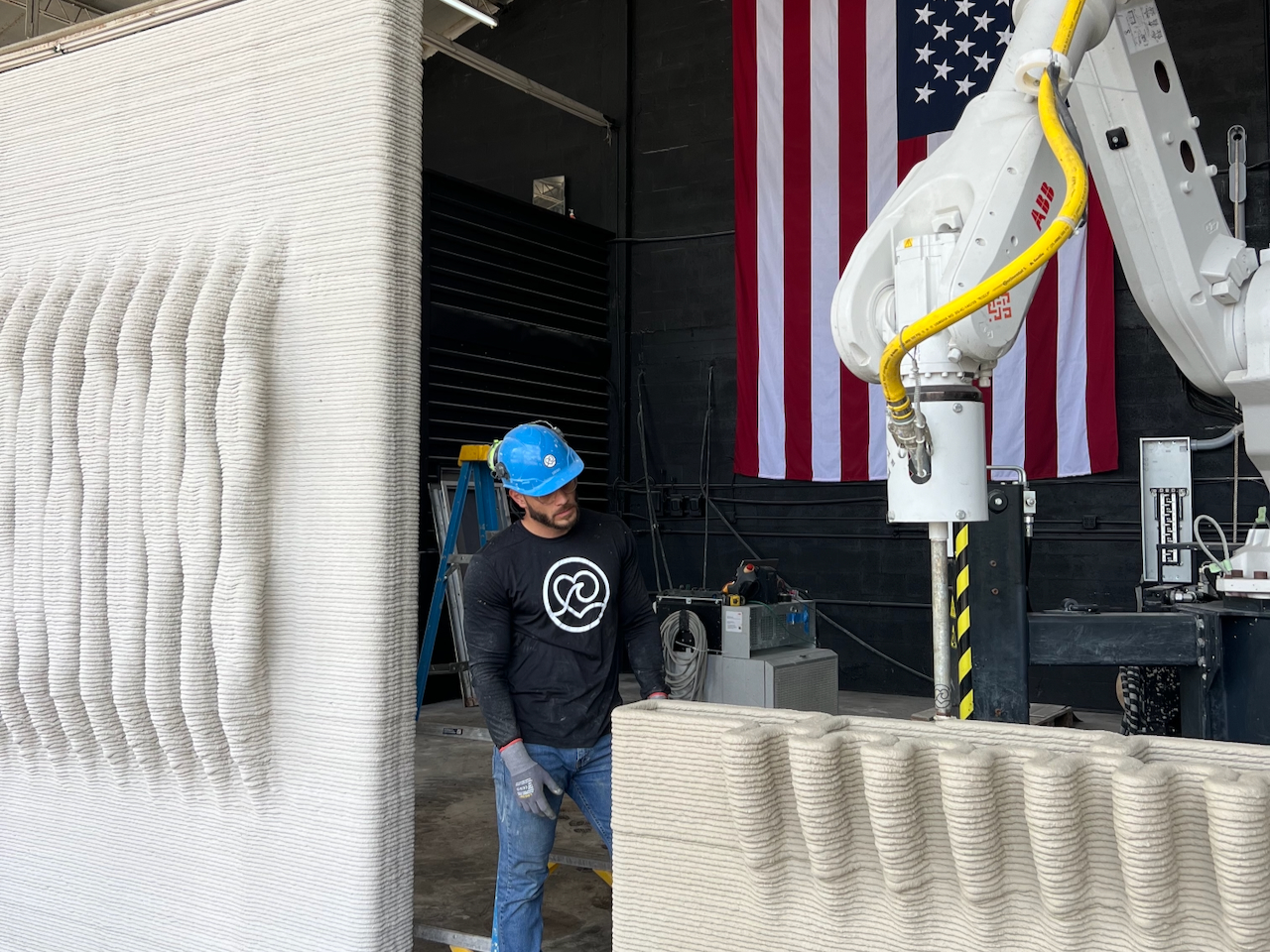
Kind Designs’ 3D printer creates a living seawall with details for marine habitat. (Photo: Kind Designs)
A Concept Comes to Life
Kind Designs is a small startup that launched in 2023 with $6 million in seed money. Within a year it gained international attention for its innovative 3D living seawall concept.
Traditional seawalls are the first line of defense against flooding. The first U.S. seawall was installed in Galveston, Texas in the early 1900s. While traditional seawalls are designed to protect communities and coastlines, at the time of their creation there was little consideration for their impacts below the water.Kind Designs set out to modernize seawalls in every way from materials and cost to protecting marine life habitat.
“We thought, how do we come up with a seawall that's, number one, more affordable, and number two, is actually something that's amazing for sea life?” said Freeman. “We came up with this idea of 3D printing living seawalls that are structurally identical to traditional concrete seawalls and can be plugged into any project that is already permitted.”
Starting with one 3D robot, named Noah, Kind Designs began printing 3D seawalls in its 50,000 square foot warehouse in Miami. With this technology they could create a modern seawall in a fraction of the time and space needed for traditional designs and production. Noah is the world’s fastest concrete 3D printer capable of printing a 10-foot by 10-foot panel in an hour versus a day required for traditional concrete molding. The 3D printed seawalls can cure and be ready for installation in three days, instead of a month.
Traditional seawalls are made of concrete that leaches chemicals into the water. Kind Designs uses a non-toxic concrete mix that does not have chlorides or metals. It is pH neutral in the water and does not leach.
Concrete seawalls are expensive, leaving many communities unable to afford them and vulnerable to increasingly threatening elements like storm surges. This means people must move inland to escape the flooding like the residents of Isle de Jean Charles in Louisiana. Because the 3D seawalls are fast to produce, they require less labor which makes them cost-effective for communities that might not have been able to afford them in the past.
Leveraging the 3D technology that was never available before is a key element in Kind Designs’ solution.
“The convergence of technology is actually convergence of 3D printing and material science. The innovation in the last few years has now enabled us to have these robots, these machines that can produce seawalls that were previously not just cost prohibitive to produce, but just technologically prohibitive,” said Freeman.
This technology also enables creativity to add elements that are not possible to produce with traditional seawall designs that have a flat surface. The flat design can destroy marine habitats because they prohibit coastal organisms from attaching leaving them defenseless during storms. The trickle-down effect is that the organisms migrate so there’s nothing left to eat the toxins in the water.
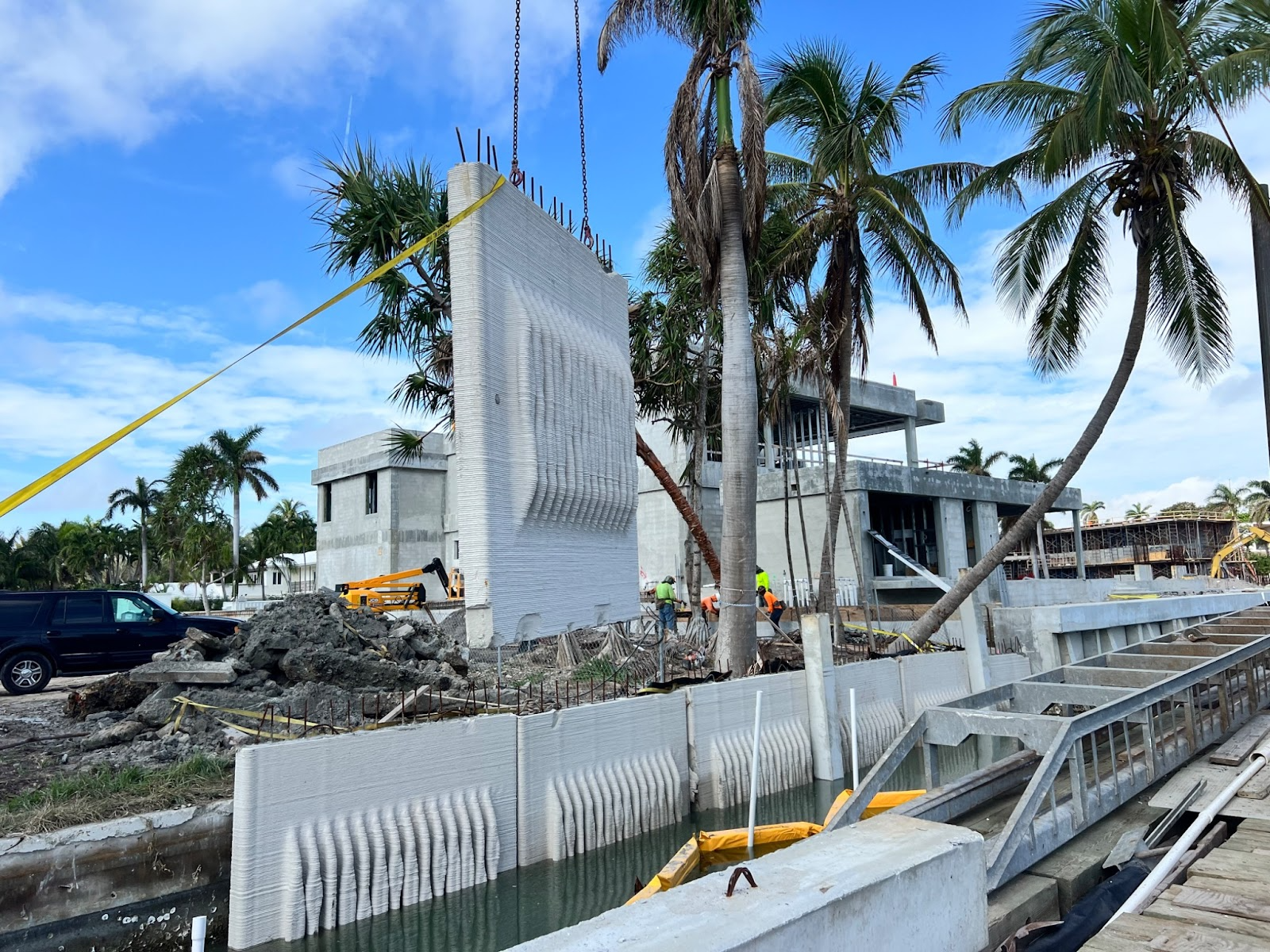
Seawall panels installed on Kind Designs first project in Miami. (Photo: Kind Designs)
When it comes to marine habitat, the high-resolution 3D printer enables Kind Designs to incorporate biomimicry design into its seawalls.
“Instead of the seawalls being flat, all of them mimic local marine habitats and in South Florida, it's primarily mangroves,” said Freeman. “All our seawall projects here look exactly like mangrove roots. The native species is familiar with that pattern and where the roots connect, they create caves that are two or four feet long, so the sea life has a space to hide from predators.”
The marine habitat incorporated into design is what makes them living seawalls with the added benefit of wave dissipation. To maintain its environmental advocacy Kind Designs also has zero-waste in its production. The leftover concrete mix is used to create living tiles that look like barnacle clusters. These can adhere to the 3D seawalls adding additional marine habitats.
As Freeman’s vision became a reality, Kind Designs flourished. It now has a fleet of three robots making the seawalls, so they are accessible and affordable to communities in ways they never were before.
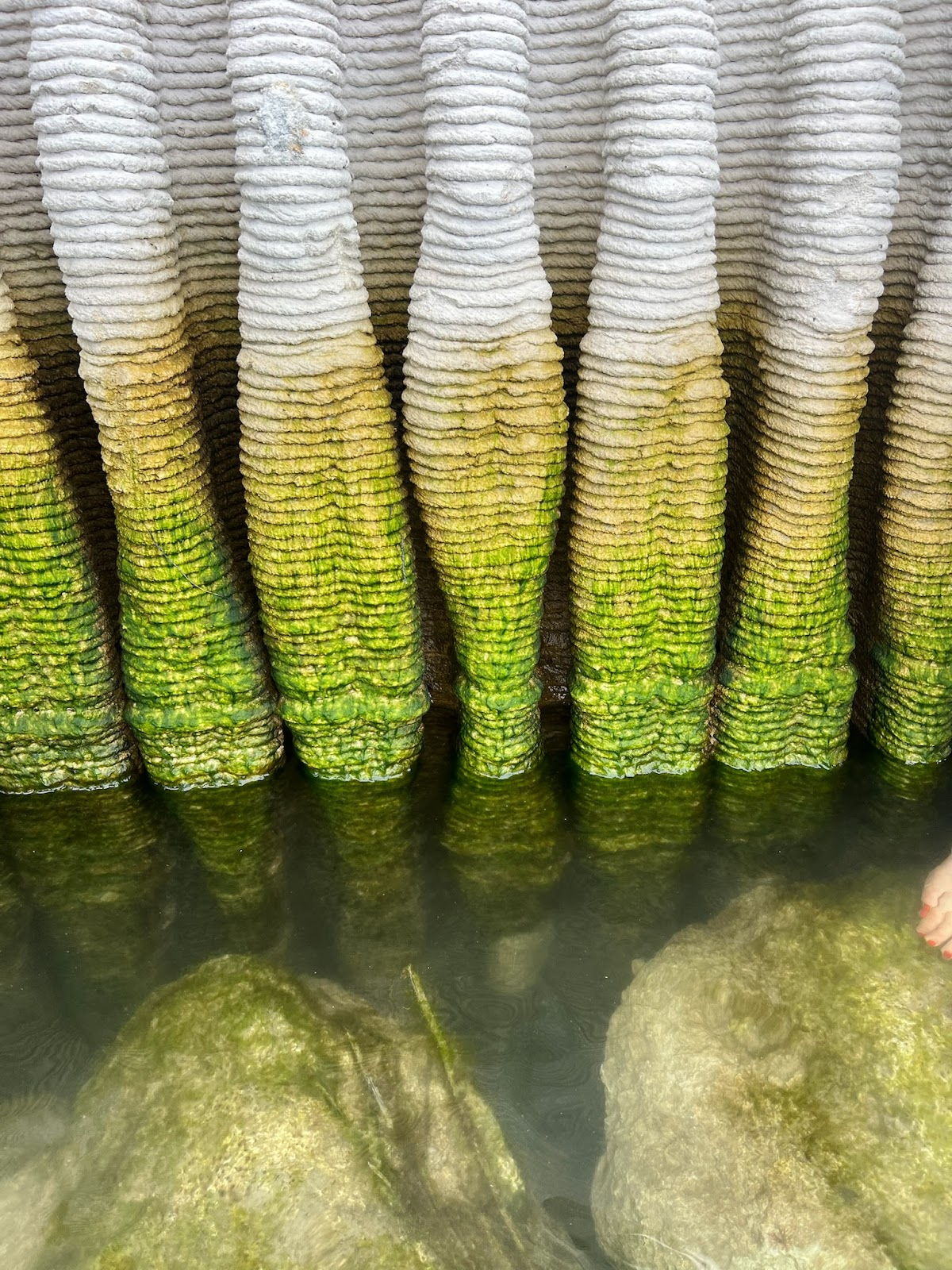
Kind Designs seawalls are designed to mimic local habitat features like mangrove roots. (Photo: Kind Designs)
Seawalls in Use
The first living seawall was installed at a private residence in Miami Beach. More projects have launched in the last year and a half and the company has even secured a government contract.
To study the impacts of the wall on sea life habitat, Freeman and her team have enlisted experts from the Tropical Fish Ecology Lab from Florida International University to monitor and record their findings for a 12-month period. The teams will monitor how fish and other organisms use the wall and study how it compares to traditional seawall designs.
“We will record the fish present both by visual (snorkeling) studies and using video cameras for shy species," said Dr. Alastair Harborne, Associate Professor of the Tropical Fish Ecology Lab at Florida International University. "We will also film sections of the wall to record what algae and corals are present. We expect that biodiversity will increase with time and more species will be on the Kind Designs’ walls than traditional flat concrete, because fish will like the additional structure."
Dr. Harborne also points to the significance of the 3D seawalls’ green engineering with a solution that benefits both people and nature. His team’s studies will go a long way in helping the designs evolve in the future with greater consideration for the marine life that is also using them.
“With rising sea levels and increasingly frequent and intense storms there is much urban infrastructure that is needed. I think it is really important to try and make this infrastructure more sustainable and wildlife friendly than just functional. For example, having 3D structure on seawalls provides many more niches for fishes and thus is likely to increase biodiversity,” said Dr. Harborne.
The research on the seawall habitat is expected to begin in late 2024.
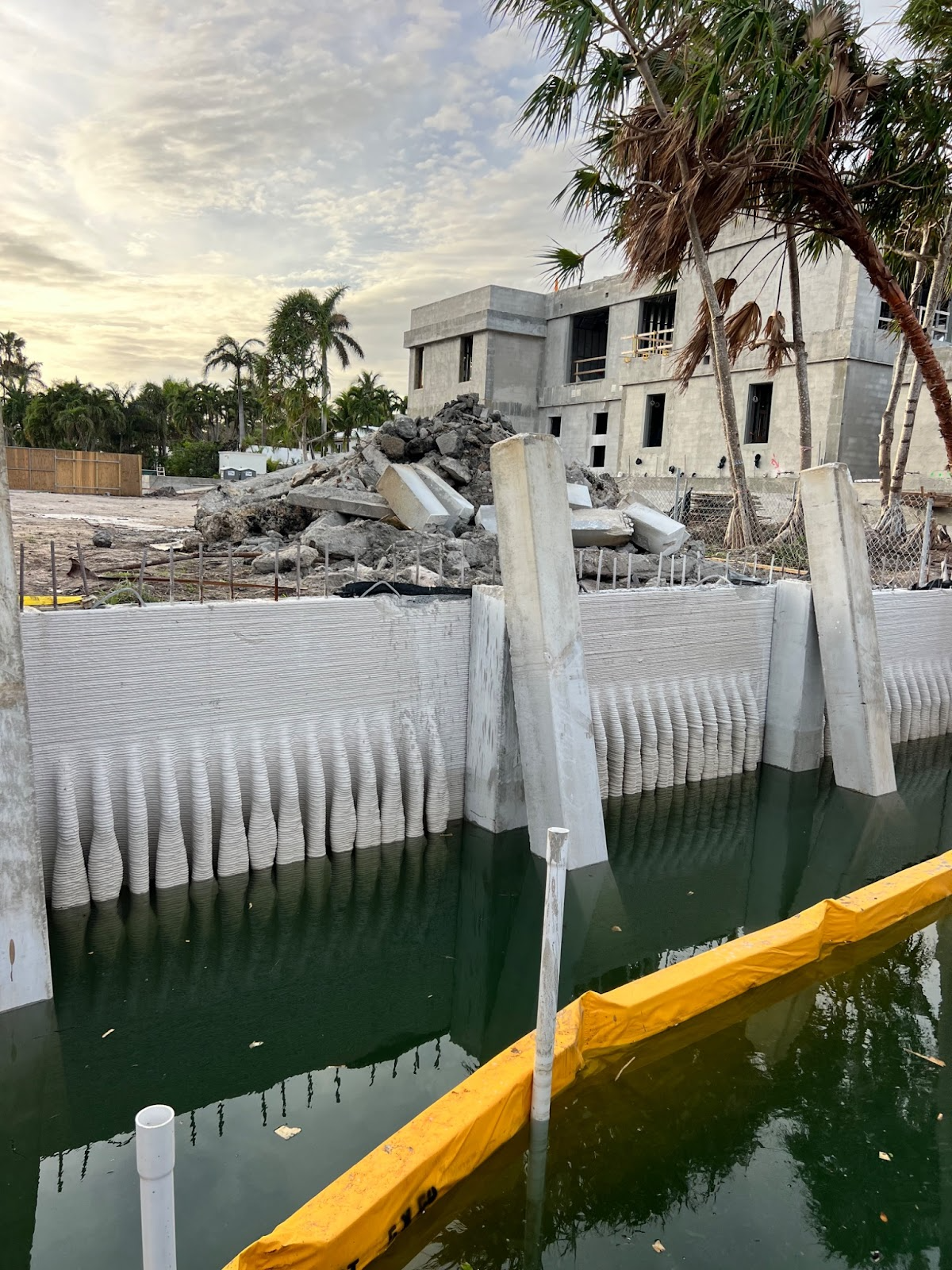
The 3D living seawalls give coastal communities a new option for protection. (Photo: Kind Designs)
Industry Game-Changer
The elements of the 3D living seawalls make them game-changers in an industry where little has changed in more than 120 years.
Given the status quo for so long, career marine contractor Glen Larson, who installs seawalls, remains skeptical whenever new products come his way.
“In the last few years there’s been lots of presentations about new ideas, industry changes and new products available. A lot of people have great ideas but only think part of it through,” said Larson, President of Dock & Marine Construction in Miami, Florida.
When the Kind Designs concept of a 3D printed living seawall crossed Larson’s desk, he was intrigued but more impressed by the research. Few seawall replacement products ever come with the evidence to prove they work, but this one was different.
“This is the first new thing that’s come through the industry, and it’s great," said Larson. "Anya spent time looking into it, talking to people, she did the testing and found the right engineer. It only takes a few people with the right ideas and the right minds to fill in the gaps. She’s the only person producing these."
What also stood out to Larson was the concept of a seawall that could structurally replace what was standard in the industry with something that had many additional benefits.
“I can install it and use it to replace something we already use but it’s better, and at the same price. It also has value for the environment,” said Larson.
One of those additional benefits is the sensors integrated into the seawalls that provide water quality data. This information can be used to predict hurricanes and king tides aiding in early warning systems to protect communities and marine life.
The reception of the 3D living seawalls has skyrocketed because it is more than just a solution—it simultaneously protects communities and the environment.
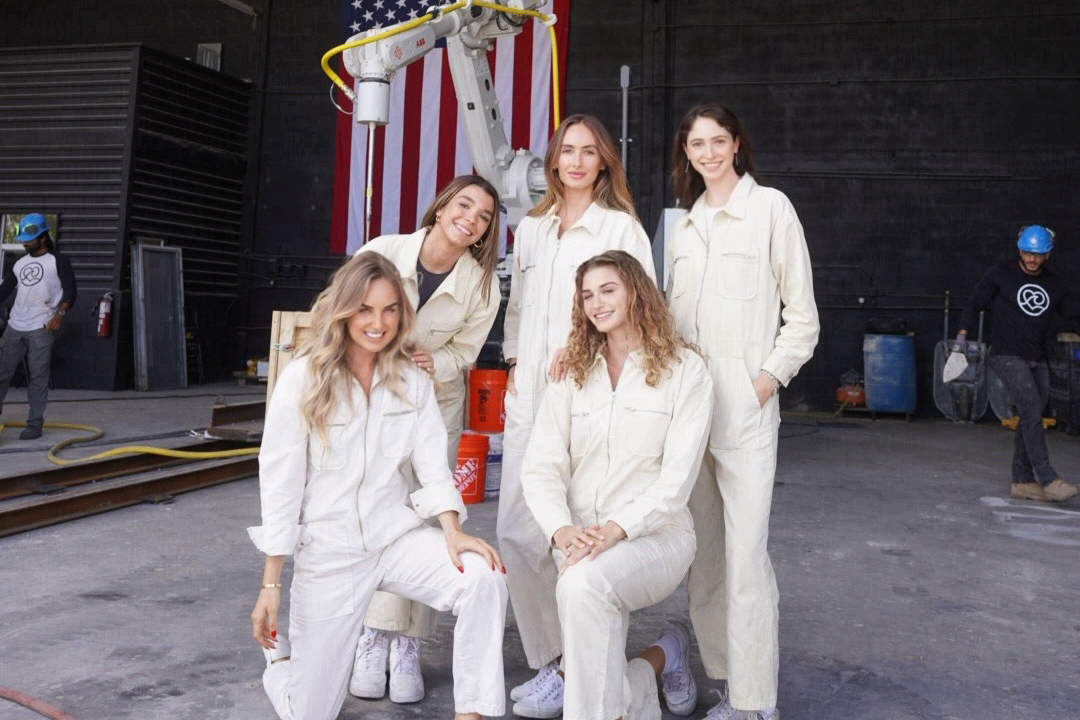
The Kind Designs team in their Miami warehouse where 3D living seawalls are printed. (Photo: Kind Designs)
A New Way Forward
As the 3D living seawalls offer a new alternative that is cost-effective, more environmentally friendly, creation of sea life habitat and that is fast to produce, the innovation continues.
Kind Designs is working on evolving its materials to begin including those that can sequester carbon. The young company is also using its seawalls and 3D printing capability to engage in community efforts like participating in a living art seawall project in Miami-Dade in Florida.
“They mandate for developers when doing big projects to contribute 1.5 percent of the budget towards public art so we're working with some developers to incorporate art into the seawall. It still has non-toxic concrete, but also has a beautiful design element. So, it actually counts as their public art contribution,” said Freeman.
Freeman will eventually expand her vision to consider other kinds of applications for her 3D seawalls and technology. She is looking into how the living seawalls can be adapted for other bodies of water like canals, rivers and lakes that are also threatened by the impacts of climate change.
Asking Freeman if she’s had time with the explosion of Kind Designs to take a step back and soak in her vision that has come to life, she quickly admits that it’s a moment she experiences everyday walking into the warehouse.
“I’ve literally lived the dream,” said Freeman.
She is living her American dream, but this version Freeman says is focused on one that helps improve other people’s lives.
